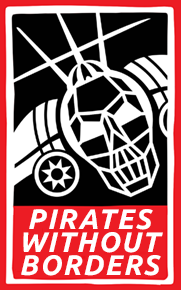 Shotgun Shell Types Explained
Shotgun Shell Types Explained
Shotgun Shell Types Explained: Instantly Know Which Is Best For You
Written by Sam Jacobs Subject: Gun RightsShotgun Shell Types: Birdshot vs. Buckshot vs. Slugs
Understanding the difference between birdshot, buckshot, and slugs is the first step in becoming a Jedi Master of choosing the perfect shotshell for your next outing, whether that's shooting skeet, hunting waterfowl, or dropping a big buck.
Birdshot
Birdshot sizes range from #12 (0.05") to FF (0.23") in diameter. Birdshot covers various shooting and hunting activities, including small game hunting (rabbit, squirrel, and fowl) and skeet shooting. The smaller pellets strike their target in thicker formation (compared to buckshot), which makes hitting small targets easier.
Buckshot
Buckshot sizes range from #4 (0.24") to 0000 (0.38") in diameter. It's primarily used for medium game hunting and home defense. Larger buckshot packs more stopping power than birdshot, although far fewer pellets actually strike the target.
Slugs
Slugs are single shotshell projectiles (unlike birdshot and buckshot, which are numerous). Slugs perform more akin to rifle bullets, and are commonly used for medium and big game hunting, home defense, and law enforcement. Two main types of slug are available: rifled, and sabot. A rifled slug is designed for a smoothbore shotgun. A sabot slug is designed for a rifled bore shotgun.

Shotgun Shot Size Chart
Understanding shot size is critical to choosing the perfect shotshell. Shot size naming conventions can seem intuitive at first. You will likely find our shot size chart more helpful than the subsequent explanation.


A shot pellet's size refers to its diameter. Each number corresponds to a different diameter. Counterintuitive though it may seem, larger numbers correspond to smaller shot sizes. For example, a #9 shot pellet is 0.08" in diameter; a #8 shot pellet, 0.09".
Buckshot follows the same convention. The smallest buckshot pellet, #4 (0.24"), also has the highest number. Once it becomes smaller than 0.30 ", buckshot is named after one or more zeroes: 0 (0.32"), 00 (0.33"), 000 (0.36") and 0000 (0.38").
One or more of the same letter can also refer to a shot size. Steel B (0.17"), BB (0.18") and BBB (0.19") shot are all commonly used for waterfowl hunting. (T, TT, F and FF shot are all extremely
rare. You may never encounter them).
Shotgun Gauges Explained

A shotgun's "gauge" refers to the diameter of its bore. This sizing system may seem arcane at first, but it is actually simple. Imagine you have 1 pound of solid lead. You use it to create 12 equally sized lead balls. The diameter of one such ball equals the diameter of a 12 Gauge shotshell's bore. In fewer words, a 1/X-pound lead ball shares the same diameter as an "X Gauge" shotgun's bore.
The 9mm Flobert and .410 Bore are the only shotshells that aren't named after gauges. Their names make their exact bore diameters more obvious (in millimeters and inches, respectively).
The most common shotshells are .410 Bore, 20 Gauge, and 12 Gauge (with 32 Gauge, 28 Gauge, 16 Gauge, and 10 Gauge ammo being rarer albeit usually available). The .410 Bore is the narrowest common shotshell. The 10 Gauge is the widest.
When it comes to shotshells, there is no intercompatibility. The .410 Bore shell is safe for .410 Bore firearms only. The same rule applies to all shotshells and shotguns. Take care, as 28 Gauge and 20 Gauge shells appear similar at first glance, but can be dangerous if mistaken for one another.
The .410 Bore and 28 Gauge are good for upland and small game hunting. When loaded with ultra-dense tungsten shot, the .410 Bore also becomes suitable for experienced turkey hunters. The 20 Gauge and 16 Gauge are often used for upland, waterfowl, and occasional deer hunting. The 12 Gauge is the most popular shotshell, and not coincidentally most versatile. It is well suited for hunting game of all sizes, as well as home defense.
Different Types of Shot Material
The first process for creating lead shot was patented in 1782. Lead remained the only type of shot until the late 1970s, when nontoxic shot types were developed to comply with conservationist laws.
Continue Reading Shotgun Shell Types Explained: Instantly Know Which Is Best For You here


























